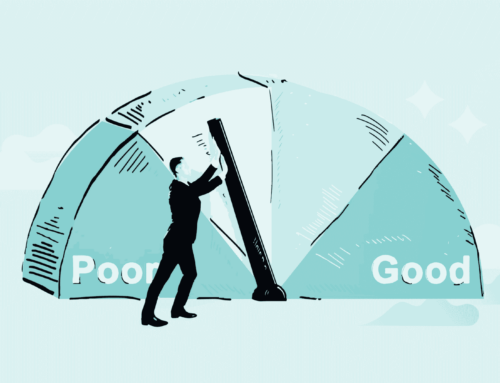What Does Financial Fitness Mean?
Achieving financial fitness demands discipline, determination and requires you to have clear goals in mind. Like running a marathon, you must follow a strict plan, work-out regularly, and focus on seeing a result. Similarly, becoming financially fit is just like setting yourself a physical fitness goal. You can’t just work out aimlessly every once in a while; you must work out smart, every time. So, what steps will you take in 2021 to become financially fit?
CNN reporter Pattie Lovett-Reid recently stated, “The key to financial success for me is having a plan, sticking to the plan, measuring the plan and tweaking the plan as life dictates.” And we agree. It isn’t easy planning your financial workout regime. Above all, once you have a clear end goal in mind and measure your progress along the way, it will get much more straightforward. Check out these five steps on how you can achieve financial fitness in 2021.
Five Steps To Help Your Financial Fitness In 2021
Set Your Financial Goals
Just like setting a goal body weight when working on your physical fitness – you won’t reach your goal weight if you don’t have one in mind. The same goes for setting your financial goals. Firstly, it’s detrimental to set yourself a clear goal when planning your journey to better financial health. This may include selecting a specific number of savings to achieve or even set yourself a certain amount of money to have paid off your debt by a particular date. For example, “I will save XX amount of money by X month” or “I will pay XXX amount of money off my car loan by X month/year.”
When setting financial goals, it’s also essential to identify your short-term goals vs your long-term goals. An example of a short-term goal is saving towards an emergency fund, paying off credit card debt, or saving for a vacation. These goals tend to be immediate expenses. In contrast, a long-term goal would be saving for retirement, paying off your mortgage, or saving for a child’s college tuition fees. These goals are considered bigger picture costs. So, you should imagine these two main categories to help you reach your end goal when you set your financial goals.
After you’ve set your goals and determined whether they will be achieved in the short-term or the long-term, you can then set out your financial plan to help you save and budget to reach your financial dreams.
Understand Where Your Money Is Going
It can feel like a vicious cycle when saving or actively trying to reduce your spending costs. We get our paycheque, and a week later, we feel as if we’re back to square one. However, this happens because we don’t understand where our money is going. Sometimes, it’s unavoidable to feel broke a week after getting your paycheque because of certain monthly expenses. Likewise, we must track our spending and follow your budget religiously to find out where our money is going.
To help you figure out where your money is going, you must create a budget that includes all your fixed expenses, flexible expenses, debt payments and savings. There are many different budgeting techniques that you can use to ensure you know where your money is going. For example, the 50/30/20 budget is trendy because of its ease of use. But if you find that you’re among the many Canadian’s who budget but still end up losing track of your spending, the MyMarble Dashboard can help you.
The MyMarble Dashboard empowers you to review your current spending and credit standing, highlighting opportunities for you to maximize your monthly reports. MyMarble allows you to overview all your accounts and track exactly where your money is going. Find out how it works online here.
Check Your Credit Report
When looking for ways to get financially fit, keeping up with your credit health is critical. Your credit report data is compiled by either of the two major credit reporting agencies in Canada, TransUnion and Equifax.
Using this credit data, lenders will take a snapshot of your report and create a credit score for you. Your credit score is a three-digit-number from 300-900 that gives lenders an idea of how financially responsible you are. Most importantly, your credit score allows lenders or creditors to decide if you’re approved for any financial product. And at times, your credit report may have incorrect or inaccurate data, which may be causing your credit score to be lower than expected.
It’s essential to check your credit report for any errors or omissions. From here, you can report it to the credit bureaus to ensure your score is correct. Overall, this will help protect your financial health. You can check your credit score online by signing up to MyMarble here.
Learn About Your Finances Through Education
Being financially fit means understanding and utilizing the main principles and best practices for saving, budgeting and understanding your credit. This means brushing up on your financial knowledge, whether it’s through books, podcasts or financial literacy courses. When needed, you can also get help from an accredited investment or financial advisor that can help you build a saving and investment plan to help you reach your financial goals. You can also easily enroll in an online course such as Udemy or Skillshare at prices ranging from $50 to $100.
At Marble, we have created our free Maestro Financial Literacy Platform with over 25 courses online for free to help you begin your journey in becoming financially fit. Like anything in life, knowledge is power and brushing up on your financial skills through learning and skills testing can help you become an expert in personal finances. You can check out and enroll in our courses all online here.
Manage Your Debt
Don’t worry; you’re not alone. Many Canadian’s are in debt and are struggling to find a way to reduce the amount of money they owe. We recently conducted a survey and discovered that 50% of respondents have considered applying for bankruptcy in 2020 amid the COVID-19 pandemic. Filing for bankruptcy may be an option for you. But there are ways you can avoid having to apply for bankruptcy.
Firstly, it’s crucial to have a clear debt reduction plan when eliminating your debt. One example of an effective debt reduction strategy is the Debt Snowball Method taught by financial guru Dave Ramsey. The debt snowball method is a debt reduction strategy where you pay off the smallest debt to the largest. From here, you will then gain momentum as you knock out each balance. Once you have the smallest debt paid in full, you can roll the money you were paying to your next debt with the next smallest balance. Here is a step-by-step guide on how you can get started:
1 – List your debts from smallest to largest regardless of the interest rate.
2- Make minimum payments on all your debts except the smallest.
3 – Pay as much as possible on your smallest debt.
4 – Repeat until each debt is paid in full.
You can also brush up on your debt management skills online with our Maestro courses. We have eight different modules on debt management to help you get started. The MyDebt course is available online for free here.
How Being Financially Fit Can Affect Your Bottom Line
Being financially fit means having confidence in your abilities to handle your budget, savings, debt and more. Like any training, taking the first steps to financial fitness is probably the most challenging part. At the start of class, your yoga instructor may say, “the hardest part is stepping on to the mat.” This same rule applies when beginning your journey to financial fitness. It takes time, energy and discipline to continue with your plan and to start seeing results. But when you see results, you will feel more motivated than ever to improve your financial fitness.
These five essential steps can be easily applied to anyone, regardless of age, where you’re from or how much money you earn. These principles work because they help people optimize their savings so you can build long-term wealth.






